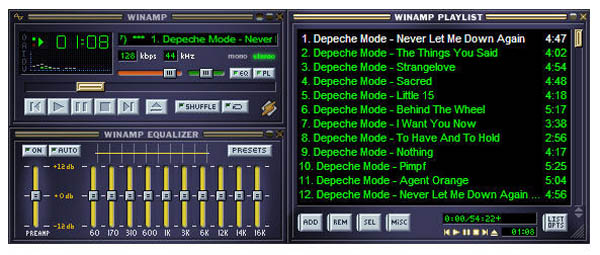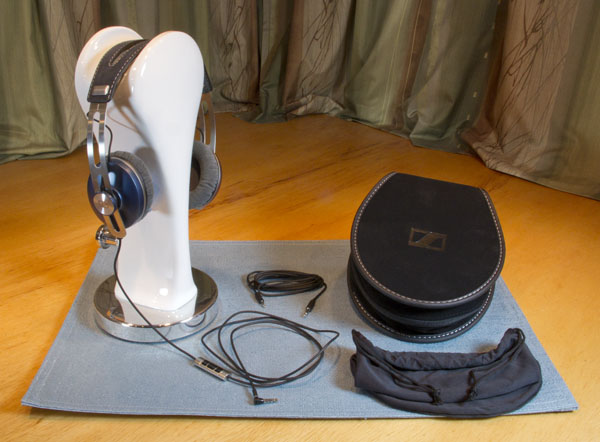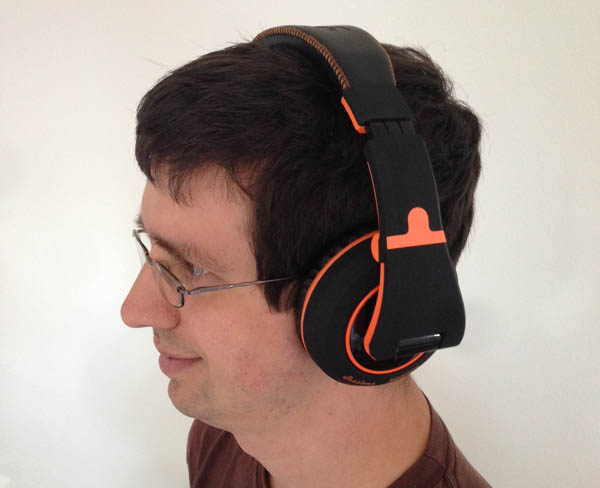LATEST ADDITIONS
Swans Speaker Systems Baton
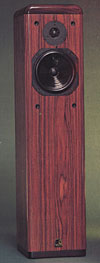 As a privileged reviewer-type person, I was sent the souped-up, all-rosewood, bi-wirable version that sells for $2905/pair. They're quite handsome and very solidly built, weighing in at a respectable 50 lbs each. At $2275$2905/pair, the Baton is Swans' most affordable speaker, and reportedly employs many of the technical refinements of their larger, more costly models.
As a privileged reviewer-type person, I was sent the souped-up, all-rosewood, bi-wirable version that sells for $2905/pair. They're quite handsome and very solidly built, weighing in at a respectable 50 lbs each. At $2275$2905/pair, the Baton is Swans' most affordable speaker, and reportedly employs many of the technical refinements of their larger, more costly models.
The Baton uses the tried-and-true two-way dynamic design, with a 7" coated-paper woofer and a 1" fabric-dome tweeter. The tweeter comes with a little Marigo dot stuck to its center to shape its response. It's not a physically easy task for a woofer to reproduce (well) all the frequencies from about 60Hz up to about 2 or 3kHz. One that succeeds is a nice find, though, because the sound has a nice coherence to it when most of the music is coming from the same driver. But don't take my word for itjust look how many zillions of two-way speakers there are out there.
Winamp Is No More
How to Revive High-End Audio
Recordings of November 1986: Chesky's First Releases
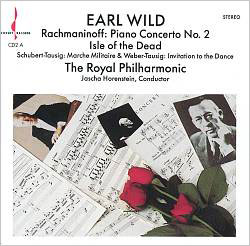 BERLIOZ: Symphonie Fantastique
BERLIOZ: Symphonie FantastiqueRoyal Philharmonic Orchestra, Massimo Fraccia
Chesky CR-1.
RACHMANINOV: Piano Concerto No.2 in c
Earl Wild, Royal Philharmonic Orchestra, Jascha Horenstein
Chesky CR-2.
Chesky? Massimo Fraccia? Is this a put-on?
No, it's not. Chesky is a new record company which, at a time when everyone is predicting the imminent demise of the LP, has just launched its first two LPs and is threatening to follow them with more.
David Chesky is a young composer/musician who, despite some impressive credentials in the classical music world, remains singularly unrenowned. But he is also a musical reactionary after my own heart, who feels that all the best performances of the so-called Romantic repertoire were done years ago and will probably never be equalled. But rather than just bitch about this in record reviews, he is doing something about it, by releasing some of those early, possibly definitive performances on the best-sounding recordings he knows how to produce.
Recordings of December 1986: Two Out-of-Character Recordings
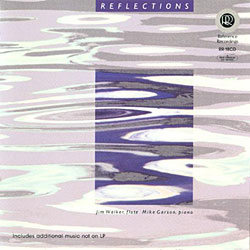 Jim Walker, flute, Mike Garson, piano
Jim Walker, flute, Mike Garson, pianoReference Recordings CD RR-18CD.
DEBUSSY: Quartet in g
RAVEL: Quartet in F
The Cleveland Quartet
Telarc CD-80111.
What do you listen to when you've heard Reference Recordings' Symphonie Fantastique, Telarc's 1812 Overture, and Sheffield's Firebird, the last of your audiophile guests have gone home, and tomorrow's a workday but you're too hyped up to go to bed?
These.
Both are from record companies whose reputations were built on sonic blockbusters, but the subjects of this review are about as true to expectation as Mr. T flouncing about with a limp wrist.
Reflections is a program of short works for flute and piano. It's quiet, restful, and, in an age when it seems that nothing is worth listening to unless it's high-powered or "significant," this laidback program is a delightful change of pace.
A Headset for Everyone: The Sennheiser Momentum On-Ear
Sure...there's a few trade-offs here and there, but I have a hard time imagining an on-ear portable headset can get much better than this!
CAD MH510 Over-Ear Headphones
I was in the market for some monitoring headphones, and CAD traditionally makes microphones for recording. Could the CAD MH510 ($159.00) be the headphone I was looking for?
Burger Records: A Wonderful Way to Live
If discovering a new artist is great, even better is discovering an entire record label of exciting new artists. It happens for me with increasing reliability:


